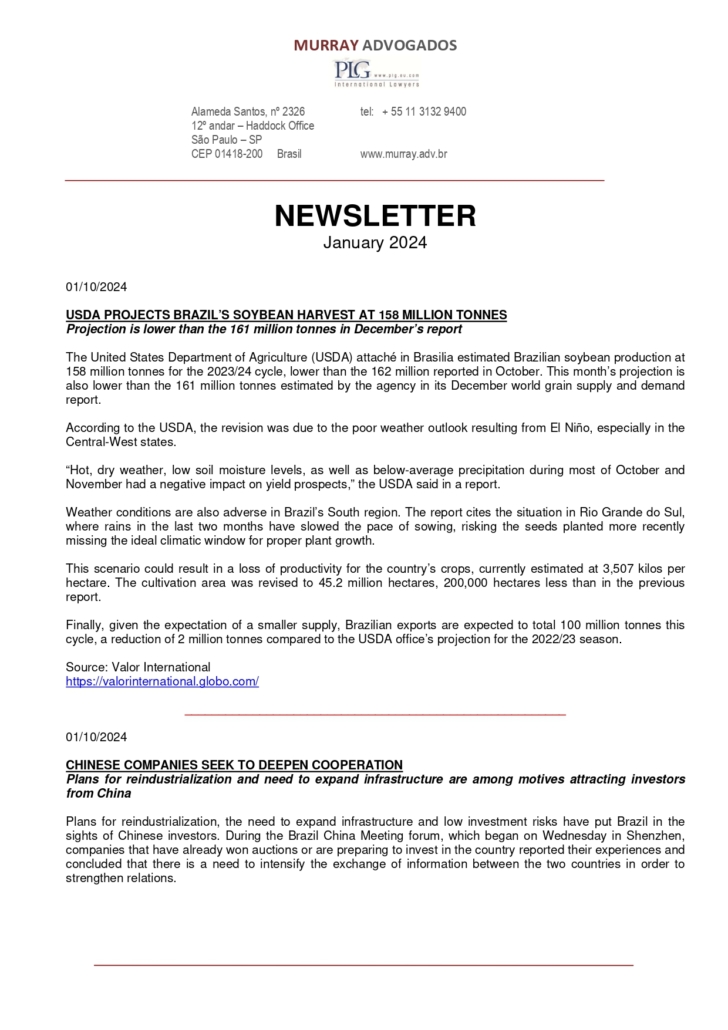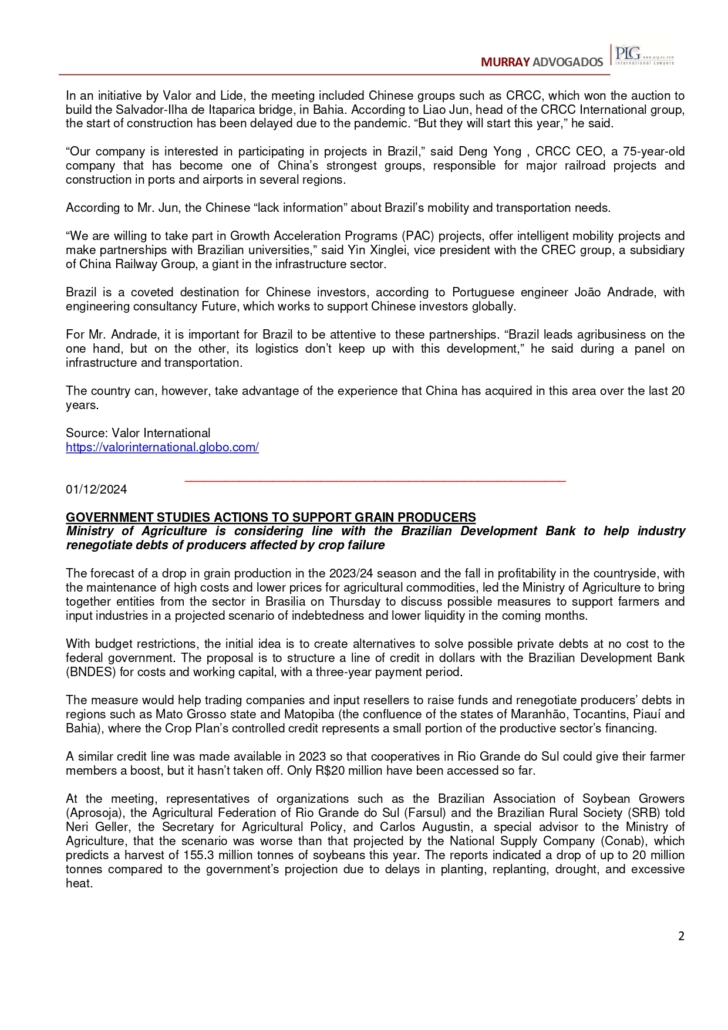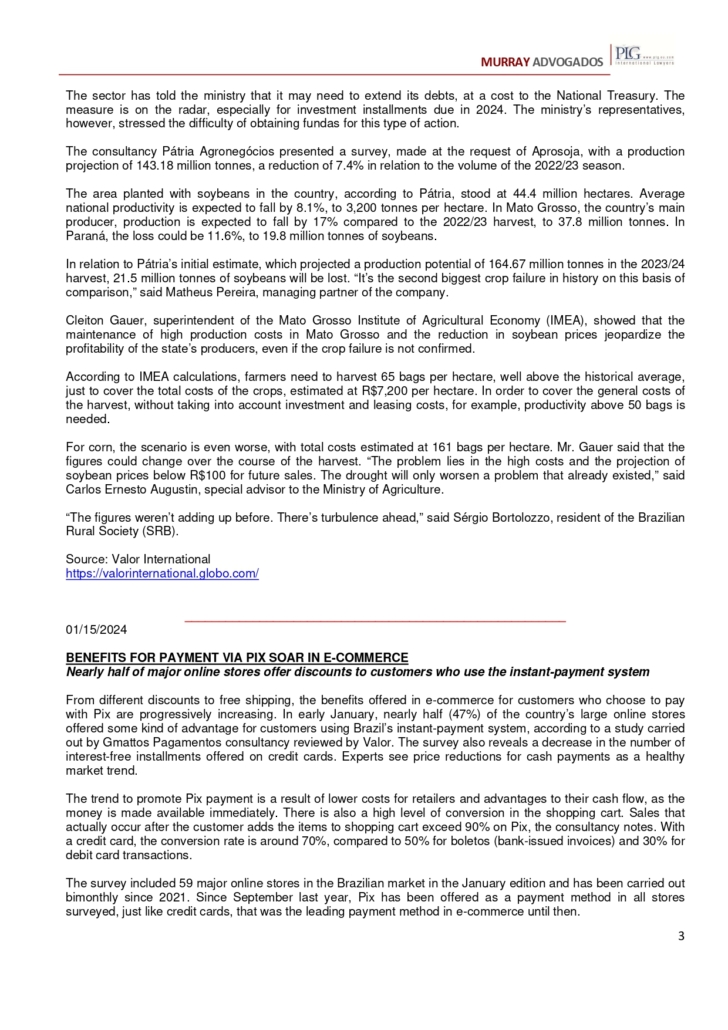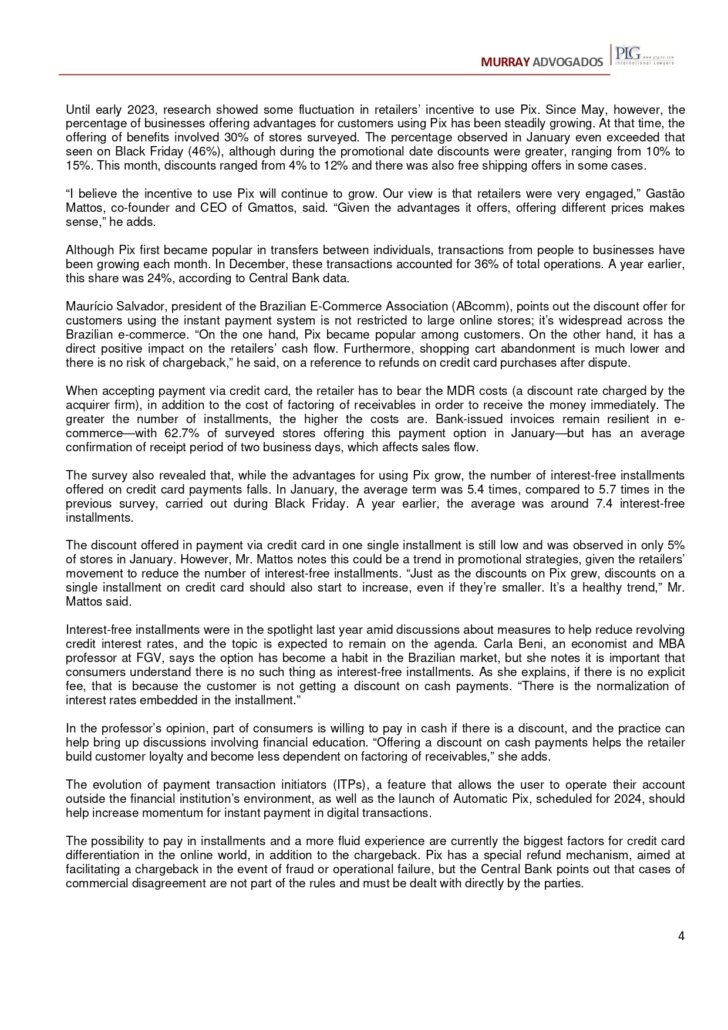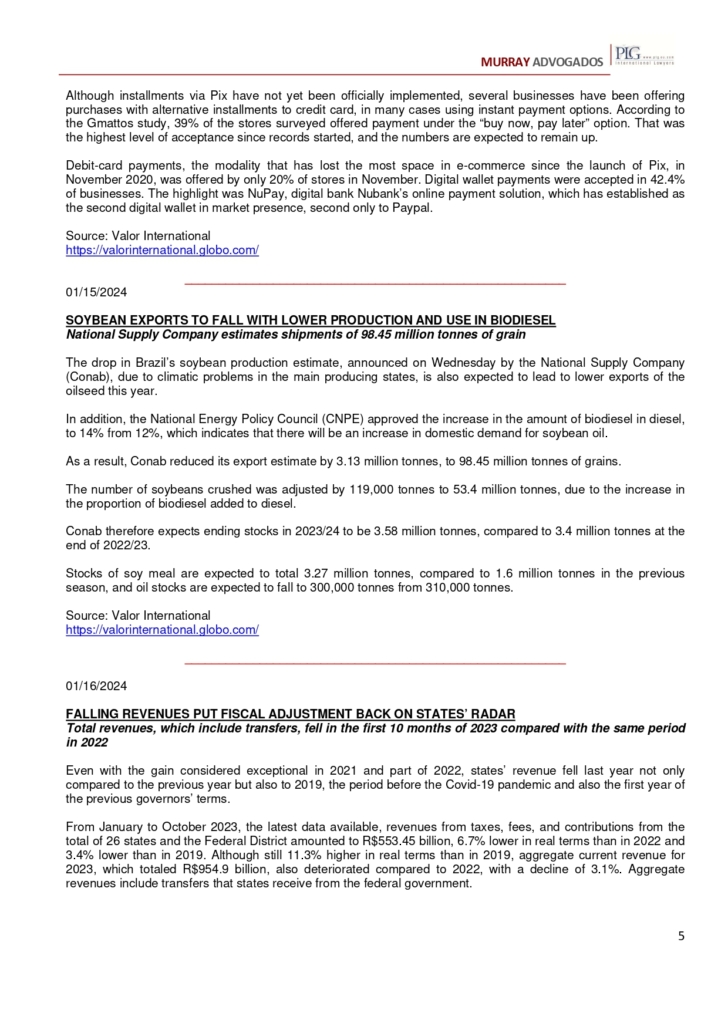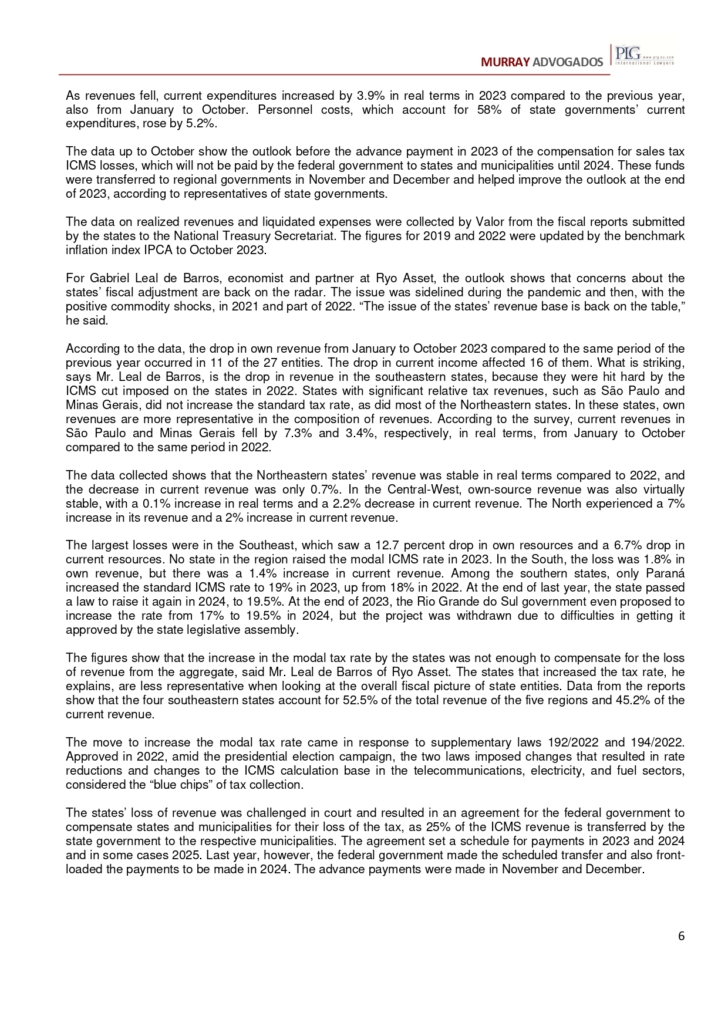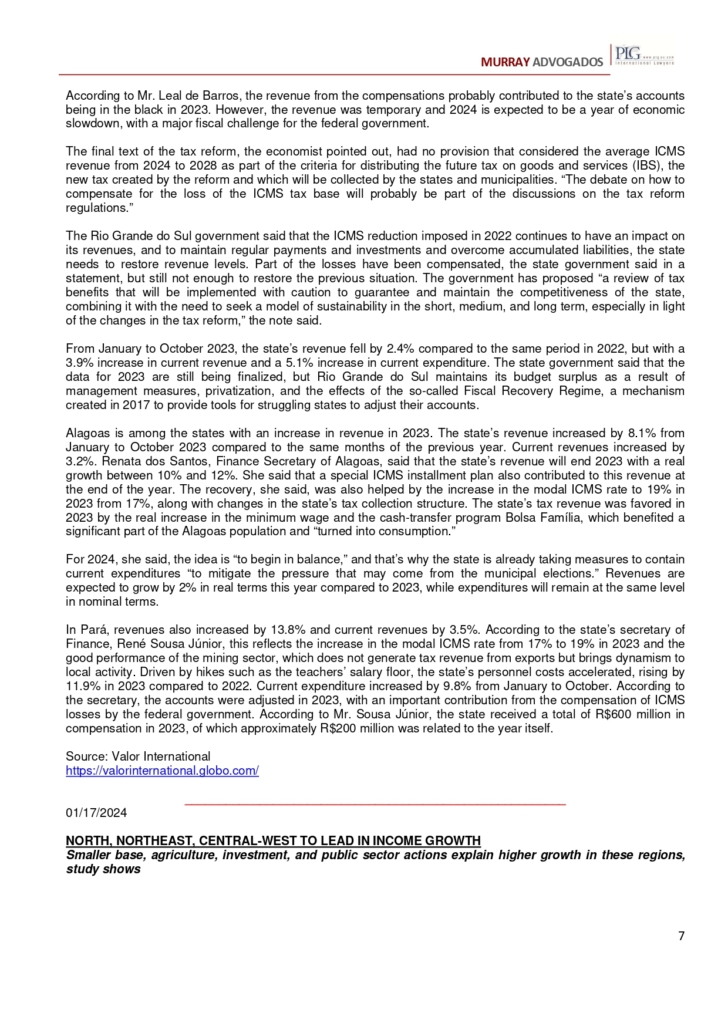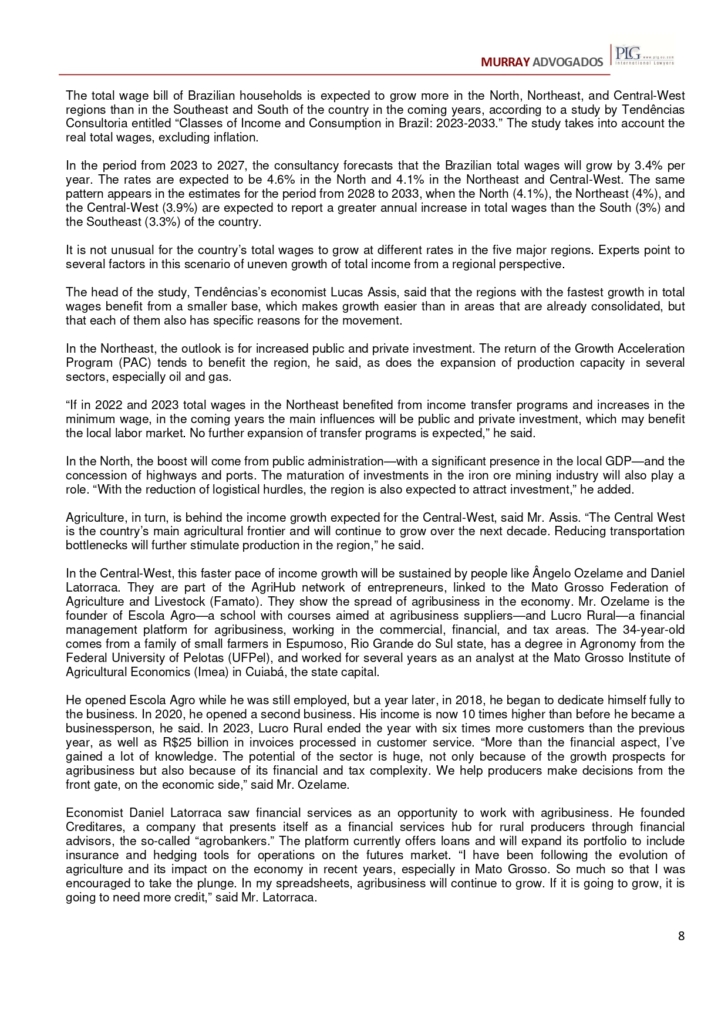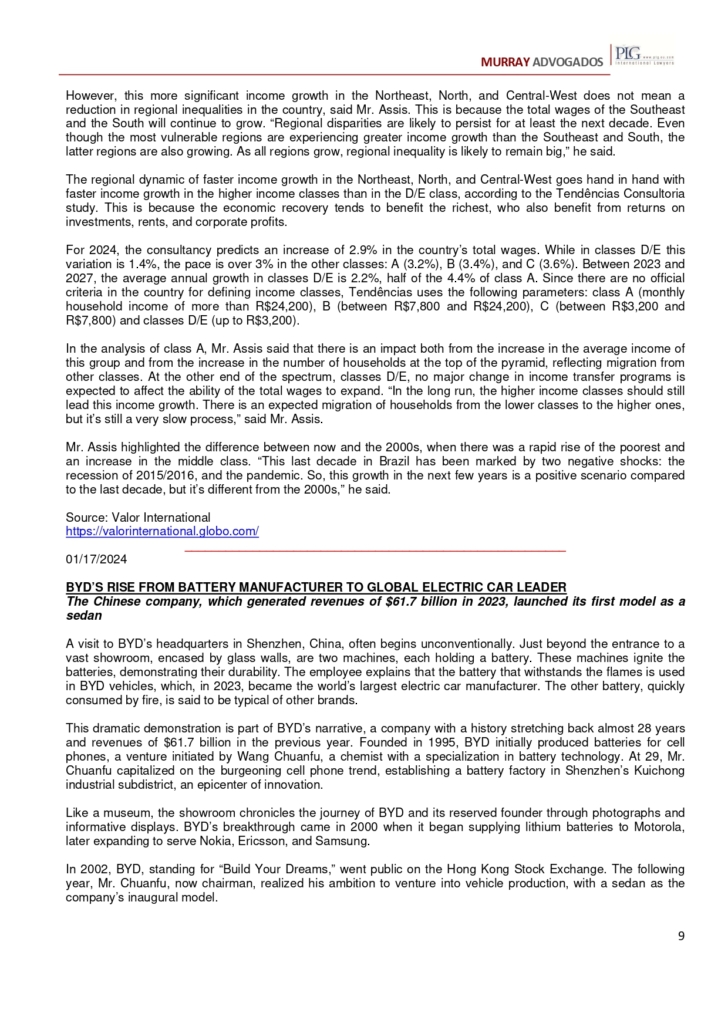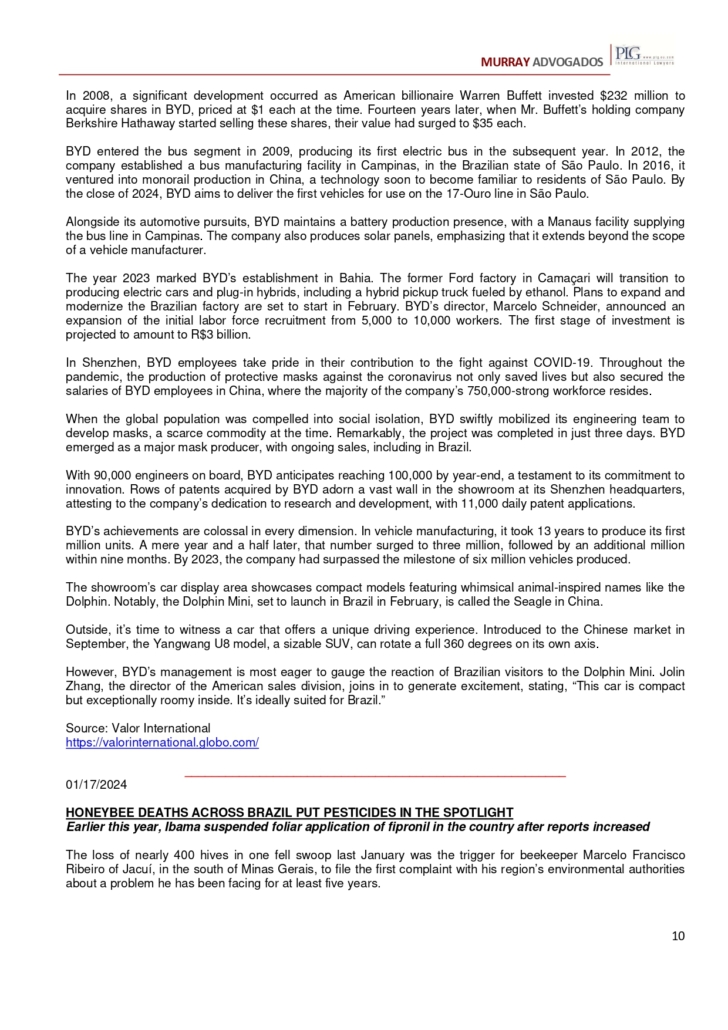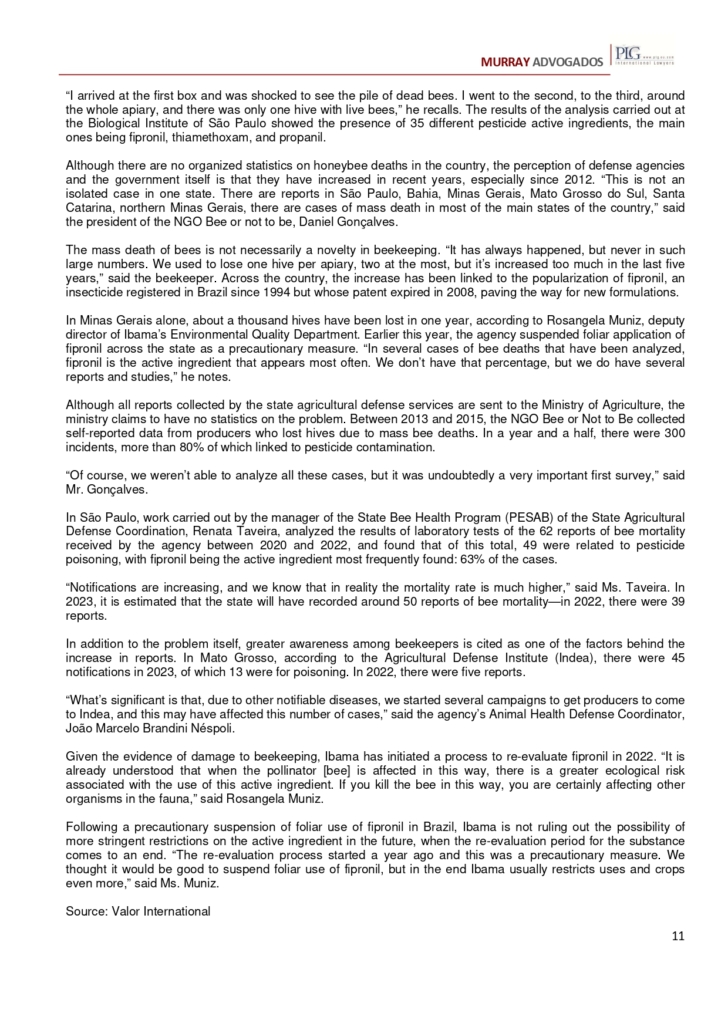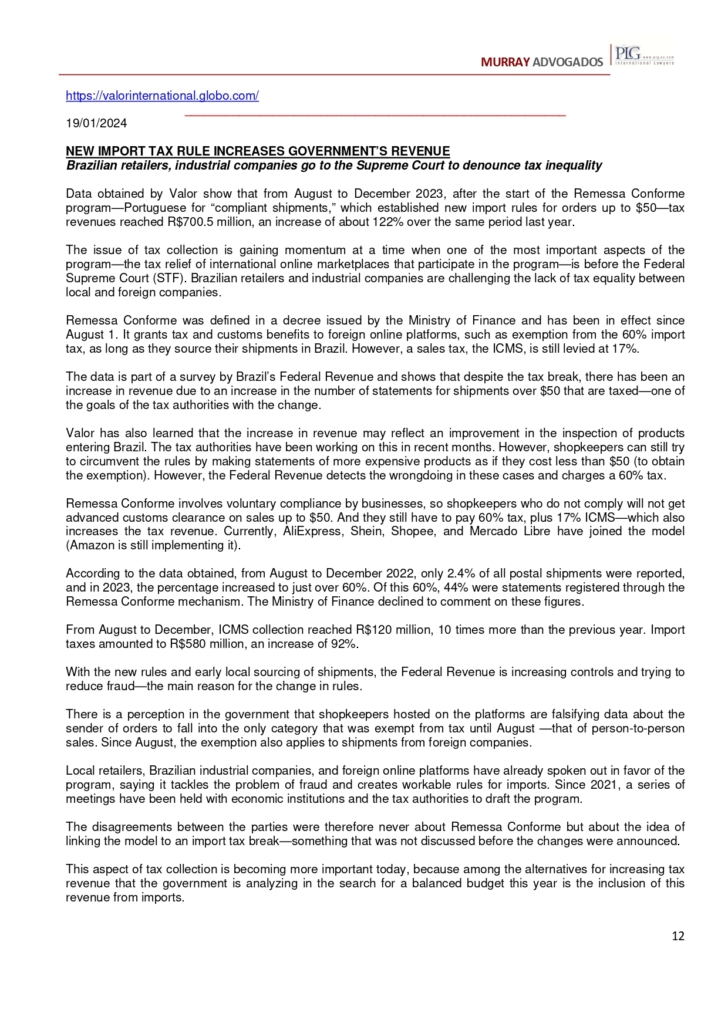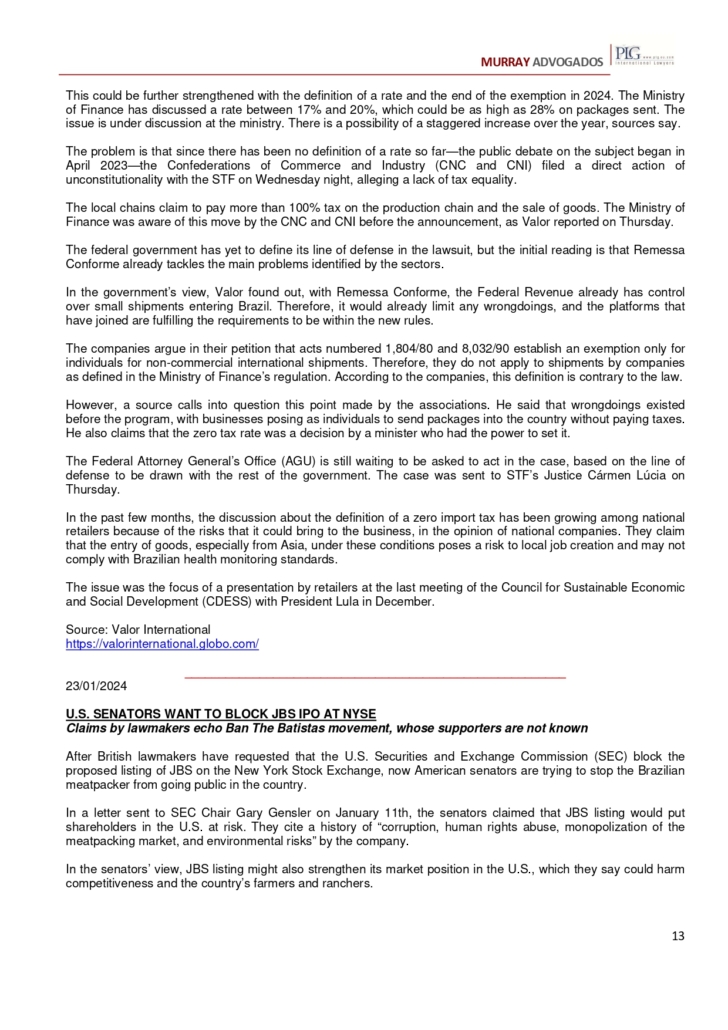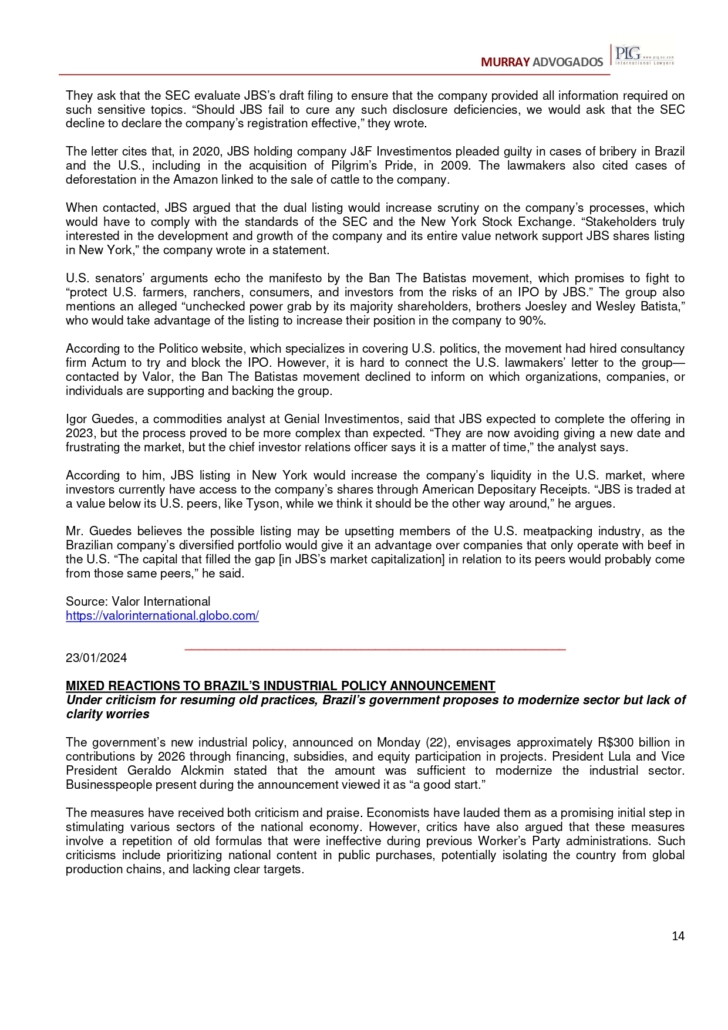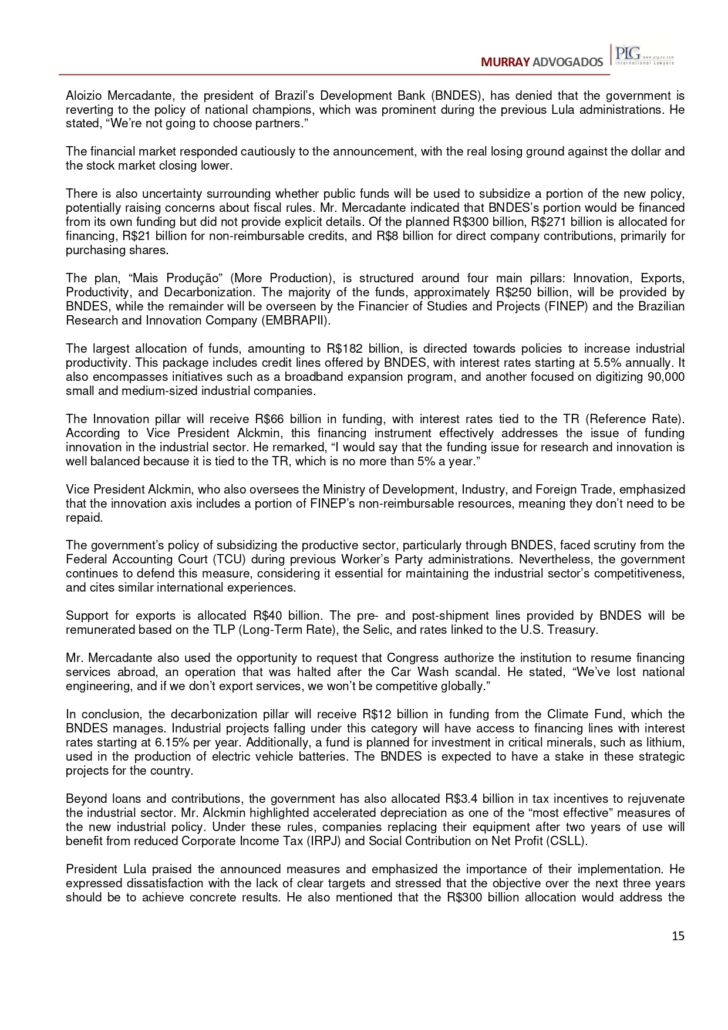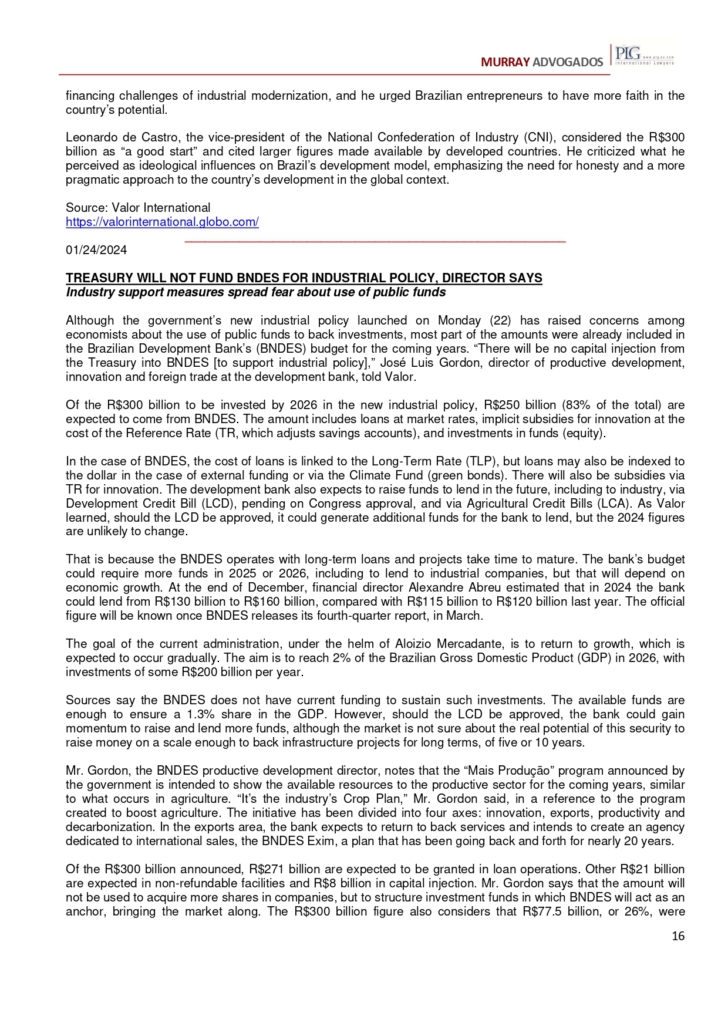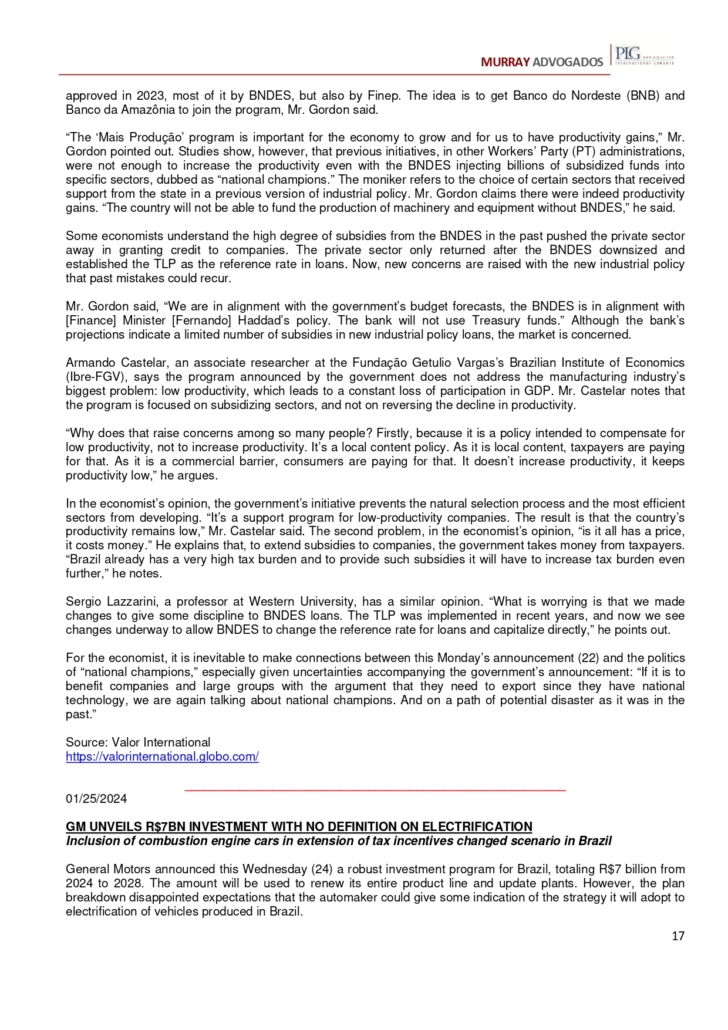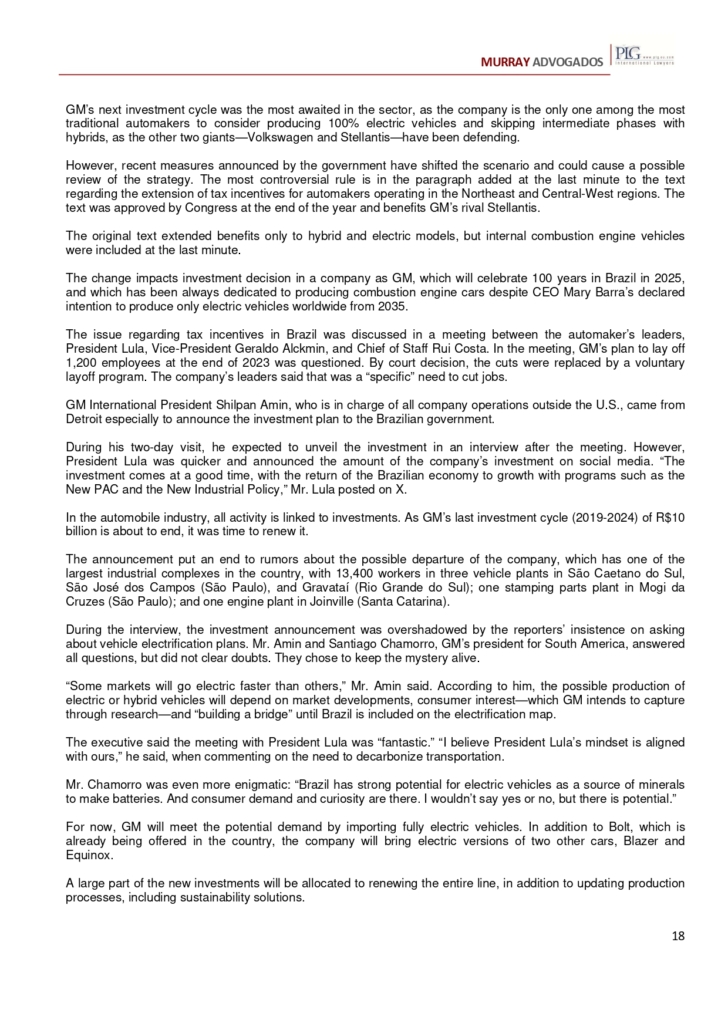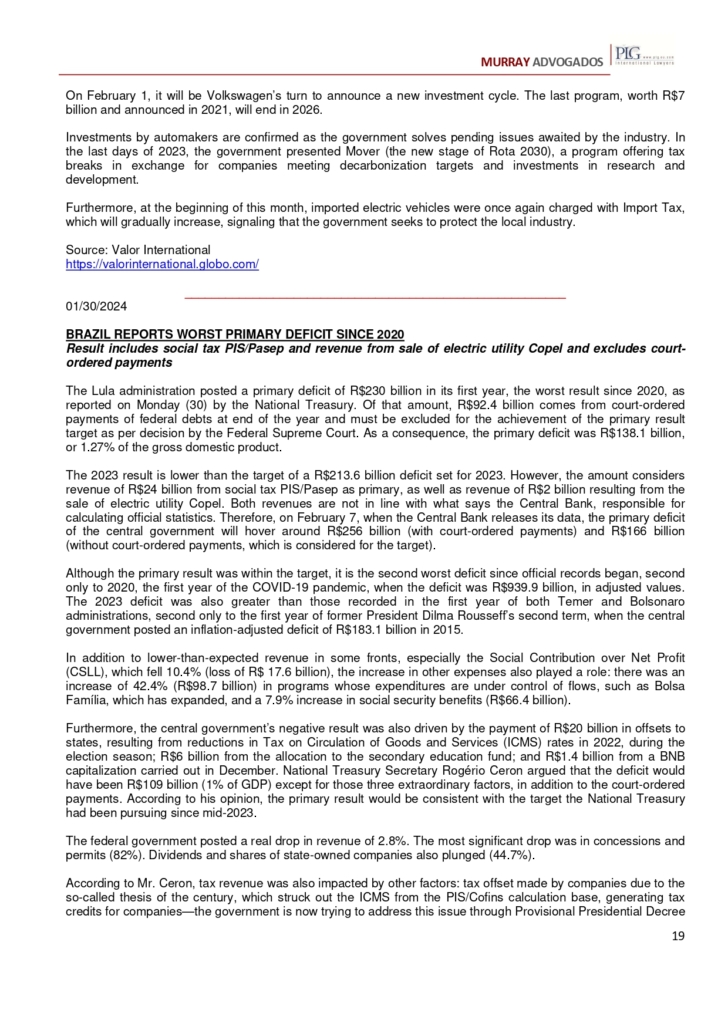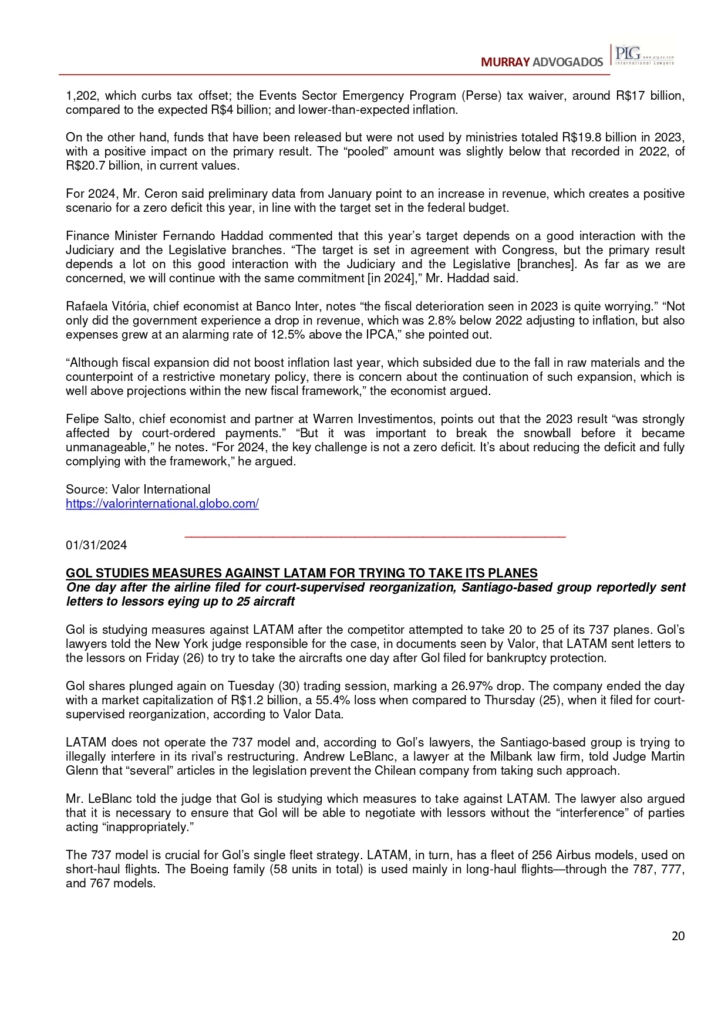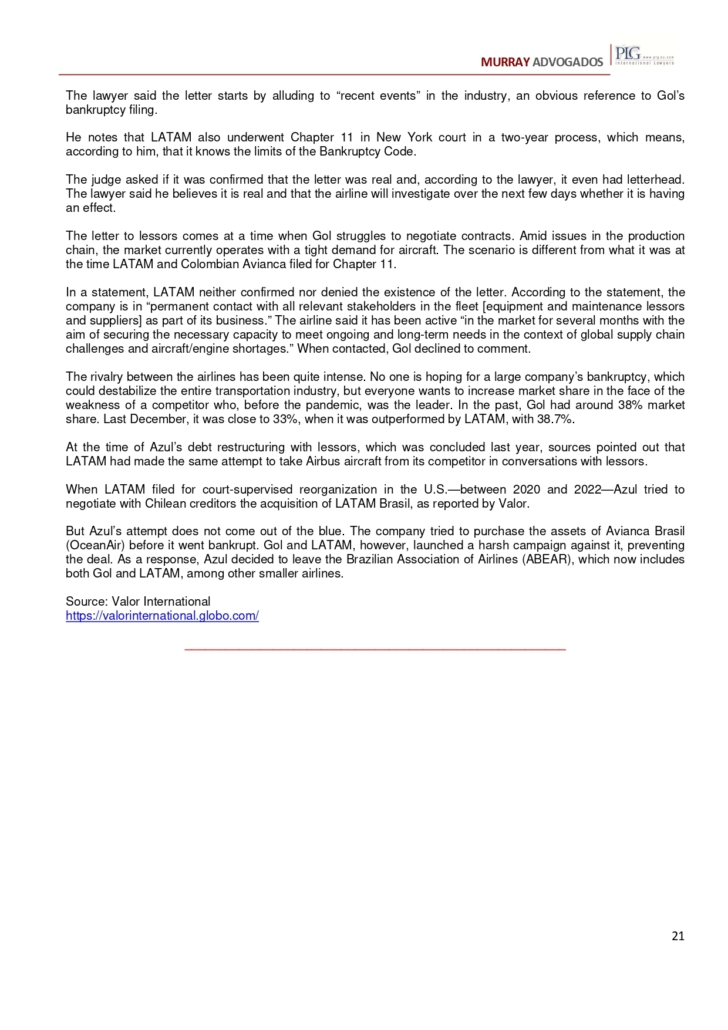Document has harder tone than announcement of decision
02/07/2024
/i.s3.glbimg.com/v1/AUTH_37554604729d4b2f9f3eb9ad8a691345/internal_photos/bs/2024/0/4/5BbRiiRuKfAXE4hAuIGQ/060224brasilprev18.jpg)
Robson Pereira Gabriel Reis/Valor
The Central Bank’s Monetary Policy Committee (COPOM) revealed that last week’s decision was taken after “more in-depth” discussions about the labor market and that services inflation deserved “greater scrutiny.” With these factors added to the committee’s assessment of a slowdown in activity, market participants saw policymakers more concerned about the economic situation, although there was no change to the scenario of another 50-basis-point cut in the Selic policy rate.
At various points in the minutes, the COPOM indicated that the economic scenario had evolved in line with expectations. However, the committee saw the need to include more in-depth discussions in the document, especially on the labor market and services inflation.
The recent increase in real incomes in the labor market data and the worse-than-expected results for underlying services inflation in recent IPCA readings—Brazil’s official inflation index—have recently triggered a warning signal among market participants. Thus, according to the minutes, the COPOM also noted these items, which was reflected in market participants’ sense of a cautious tone in the document.
In recent weeks, signs of a domestic economy that is still very hot and the deterioration in the behavior of U.S. Treasuries, with rising rates, have led to a sharp adjustment in local interest rates. At one point, the market was pricing in a Selic rate close to 9.5% per year at the end of this year.
“We saw the statement [of the decision] with a more neutral tone, and there was an expectation that the minutes would also come without any major news. However, we saw a more hawkish tone,” said Robson Pereira, chief economist at Brasilprev. He notes that the COPOM maintained its forecast for the next moves, signaling a further 50-basis-point cut in the Selic, but made “quite important” changes in its assessment of the scenario for conducting monetary policy going forward.
Mr. Pereira notes that the minutes brought to light the Central Bank’s greater concern with the labor market and services inflation, and that the monetary authority reinforced that uncertainty is high. “The Central Bank signaled that there is a more intense debate about the heated labor market and the causes of services inflation, in addition to the impact of the global scenario. All this is presented in a context of uncertainty, but it is a coherent minute that shows a more concerned Central Bank.”
In its baseline scenario, Brasilprev projects the Selic rate at 9% per year at the end of this year and 8% in 2025. “At the moment, we don’t see any asymmetry, but before today’s [Tuesday’s] minutes, we saw some asymmetry for [a Selic rate] a little below 9%,” he said.
In terms of inflation, the firm expects the IPCA to close the year at 4% per year, but the economist points out that it tends to decelerate further, which could eventually change something for interest rates as well. “Of course, central banks make decisions looking further ahead, and for 2025 we believe that inflation will be very close to target. The minutes cite the Central Bank’s projection of around 3.2%. That’s a workable number. We’re working with something close to 3%, but it’s a gradual process and the risks are very high,” Mr. Pereira said.
Speaking at a BTG Pactual event on Tuesday, Central Bank President Roberto Campos Neto at times struck a similar tone to the minutes. He said, for example, that it is “very difficult to see a more sustained decline in inflation without a decline in services inflation.”
Mr. Campos also highlighted the significant fall in “implicit” inflation, which is priced in by the market via the NTN-Bs (National Treasury notes), which was seen by the market as a more “dovish” signal and caused futures rates to fall on Tuesday. The January 2026 DI rate fell to 9.67% from 9.71%.
For Rafael Cardoso, chief economist at Daycoval Asset, it’s not possible to say that the minutes brought hawkish components than expected. “We believe that the Central Bank is explaining the reasons for its guidance, rather than adding new hawkish elements to the communication. The explanations are in line with what we have been following lately, and internally there is also a discussion about whether there is still an improvement in inflation on the near horizon,” said the economist.
Mr. Cardoso also notes that the COPOM’s own inflation scenario has not changed. “We think the minutes are very neutral,” he said. In his opinion, there is little room for further improvement in services inflation or goods prices.
In Daycoval Asset’s baseline scenario, the Central Bank should continue the current pace of 50-bp cuts, bringing the policy rate to 9% per year by the end of the year. “We also project a Selic of 8.5% in 2025, but we see risks that this level will be reached this year, depending on factors such as the external scenario and a slowdown in economic activity. Our call for the Selic to reach 9% in 2024 has a bearish bias,” he concludes.
*Por Victor Rezende, Gabriel Roca, Estevão Taiar, Alex Ribeiro — São Paulo and Brasília
Source: Valor International

/i.s3.glbimg.com/v1/AUTH_37554604729d4b2f9f3eb9ad8a691345/internal_photos/bs/2024/1/D/i0tH88Rhq43b1lpmdGlw/luciana-botafogo-do-fonplata-wenderson-araujo-valor.png)
/i.s3.glbimg.com/v1/AUTH_37554604729d4b2f9f3eb9ad8a691345/internal_photos/bs/2024/l/I/CJVfSFSiOdbwhXn2CBzQ/020224liavalls36.jpg)
/i.s3.glbimg.com/v1/AUTH_37554604729d4b2f9f3eb9ad8a691345/internal_photos/bs/2023/A/e/mBzbdWRLO75lkm5fMsqA/152-top5-serv-20financeiros-cielo.jpg)
/i.s3.glbimg.com/v1/AUTH_37554604729d4b2f9f3eb9ad8a691345/internal_photos/bs/2024/0/L/iorqaeS7eoQBLEDQ5x8Q/lino2.jpg)

/i.s3.glbimg.com/v1/AUTH_37554604729d4b2f9f3eb9ad8a691345/internal_photos/bs/2024/S/q/AWFO7kTIyeCBx8O0IA8A/dias-toffoli-fellipe-sampaio-sco-stf.png)
/i.s3.glbimg.com/v1/AUTH_37554604729d4b2f9f3eb9ad8a691345/internal_photos/bs/2024/4/J/bLozvOSWmMTZOXhB7SNw/2-20d.-20lucely-20pio.jpg)
/i.s3.glbimg.com/v1/AUTH_37554604729d4b2f9f3eb9ad8a691345/internal_photos/bs/2023/8/A/S9lIS6S466YbQg26ebSA/105392488-bras-c3-adlia-20df-2028-12-2023-20-20o-20ministro-20da-20fazenda-20fernando-20haddad-20concede-20entrevista-20coletiva.jpg)
